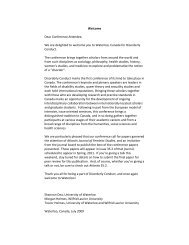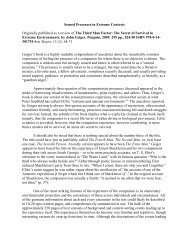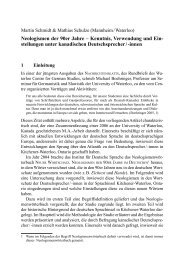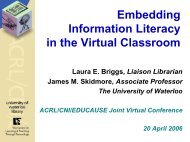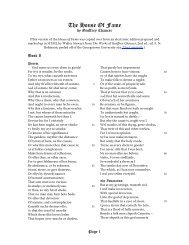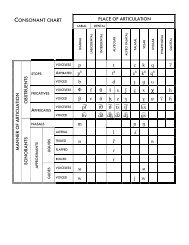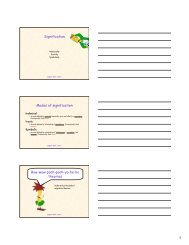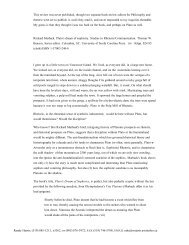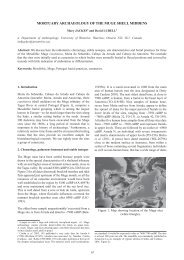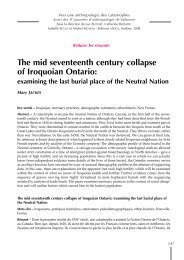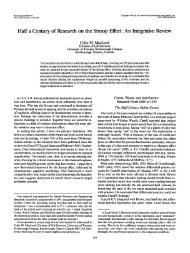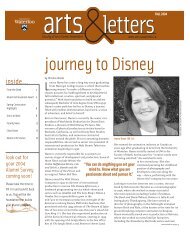Individual Differences in Learning and Memory: A Unitary ...
Individual Differences in Learning and Memory: A Unitary ...
Individual Differences in Learning and Memory: A Unitary ...
You also want an ePaper? Increase the reach of your titles
YUMPU automatically turns print PDFs into web optimized ePapers that Google loves.
540 COLIN M. MACLEOD<br />
models, exactly the sort of goal Underwood (1975) has advocated. In<br />
addition, as Mathews et al. (Note 9) have shown, we can then attempt to<br />
teach these strategies as a means of evaluat<strong>in</strong>g flexibility. This “double-<br />
barreled” procedure offers a systematic, model-governed methodology<br />
for the study of processes operat<strong>in</strong>g <strong>in</strong> STS that are critical <strong>in</strong> promot<strong>in</strong>g<br />
<strong>in</strong>formation to LTS <strong>and</strong> perhaps even <strong>in</strong> determ<strong>in</strong><strong>in</strong>g the form of the LTS<br />
representation. It may be, too, that this approach will provide a l<strong>in</strong>k to<br />
<strong>in</strong>dividual differences research <strong>in</strong> other related areas, such as that of<br />
mental imagery (for reviews, see Ernest, 1977; Marks, 1977).<br />
Semantic Long-Term Store<br />
One of the tasks most frequently used <strong>in</strong> <strong>in</strong>formation process<strong>in</strong>g<br />
analyses of <strong>in</strong>dividual differences has been the match<strong>in</strong>g task developed<br />
by Posner <strong>and</strong> his colleagues (Posner & Mitchell, 1967; Posner, Boies,<br />
Eichelman, & Taylor, 1969). In the prototypical version of the task, two<br />
letters appear <strong>and</strong> the subject is required to <strong>in</strong>dicate whether the letters<br />
have the same name. Thus, the response is “same” to “AA” <strong>and</strong> “Aa,”<br />
but “different” to “AB” or “Ab.” Of particular <strong>in</strong>terest is the f<strong>in</strong>d<strong>in</strong>g that<br />
physical identity trials (“AA”) take less time than do name identity trials<br />
(“Aa”). This difference is taken as a measure of time to access the name<br />
code <strong>in</strong> semantic LTS, s<strong>in</strong>ce presumably only name identity trials require<br />
access to LTS. The work of Hunt <strong>and</strong> his colleagues (Hunt et al., 1973,<br />
1975) has repeatedly demonstrated a reliable relationship between the<br />
access measure <strong>and</strong> verbal ability. The pattern of results suggests that<br />
high verbal-ability subjects can access codes <strong>in</strong> LTS more rapidly than<br />
low verbal-ability subjects. Furthermore, <strong>in</strong> extensions to other groups of<br />
subjects (e.g., retardates), a quite orderly pattern of results has been<br />
obta<strong>in</strong>ed.<br />
More recent work <strong>in</strong> other laboratories has replicated <strong>and</strong> extended<br />
these f<strong>in</strong>d<strong>in</strong>gs. I will mention only two of these studies, s<strong>in</strong>ce Hunt (1978)<br />
reviews the evidence <strong>in</strong> detail. The first strongly supports Hunt’s results.<br />
Goldberg, Schwartz, <strong>and</strong> Stewart (1977) varied the abstractness of the<br />
relationship between the stimulus pairs by us<strong>in</strong>g physically identical<br />
words (DEER-DEER), homonyms (DEER-DEAR), <strong>and</strong> cohyponyms<br />
(DEER-ELK). They observed that as abstractness <strong>in</strong>creased so did the<br />
difference between subjects high <strong>and</strong> low <strong>in</strong> verbal ability.<br />
A second study us<strong>in</strong>g a different procedure purports to disconfirm<br />
predictions derived from the f<strong>in</strong>d<strong>in</strong>gs of Hunt <strong>and</strong> Goldberg et<br />
al. Hogoboam <strong>and</strong> Pellegr<strong>in</strong>o (1978) presented their subjects with a cate-<br />
gory name followed by a set of s<strong>in</strong>gle words <strong>and</strong> s<strong>in</strong>gle pictures to which<br />
the subjects responded “yes” or “no” as a function of whether the items<br />
were category members. Neither picture nor word verification reaction<br />
times showed a reliable relationship with verbal ability. However, their<br />
task was not a match<strong>in</strong>g task, <strong>and</strong> they were not deal<strong>in</strong>g with difference



